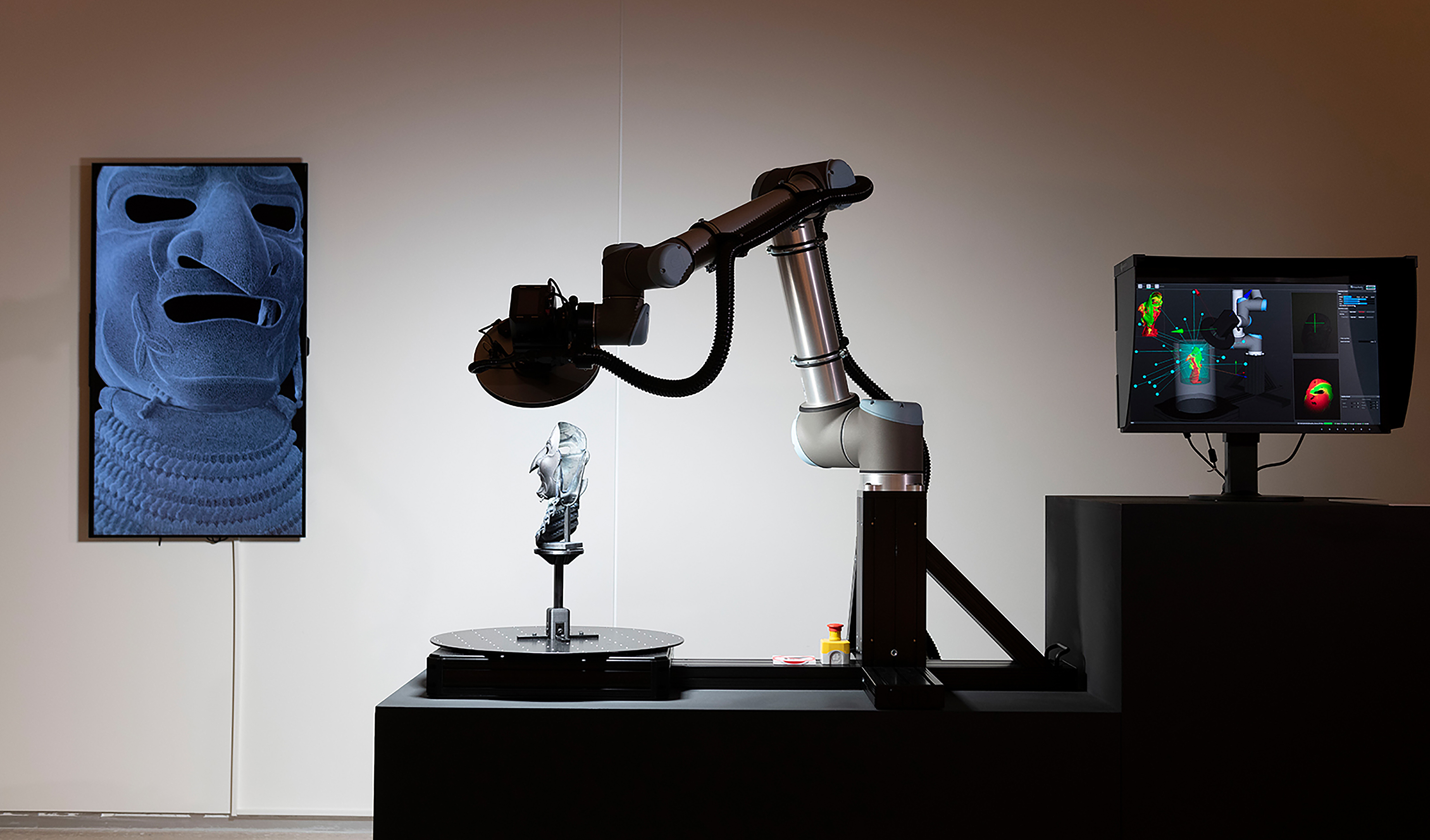Fraunhofer Technologies in the EU ECHOES Project
Collaboratively Mastering Challenges in the Cultural Sector with Digital Twins
The cultural sector is facing a variety of challenges: financial bottlenecks, declining visitor numbers and the costly preservation of valuable cultural assets. Digital technologies offer promising solutions to ensure long-term access to art and culture for a broad audience. Fraunhofer IGD is actively contributing to the recently launched EU ECHOES project with intelligent approaches to digitization, processing and visualization as well as high-precision geometry and material reconstruction. The aim is to build a collaborative cloud platform for European cultural heritage.

(Darmstadt) Whether for preservation, restoration, or reconstruction, digitization of cultural assets is an essential part of protecting valuable works of art and artifacts and can also make them more accessible. Fraunhofer Institute for Computer Graphics Research IGD is working on solutions to scan statues, paintings and sculptures in unprecedented detail, creating digital twins of cultural assets that can be exhibited virtually.
Fraunhofer solutions enable robot-assisted, fully autonomous true-color 3D digitization of any object, with no need for manual post-processing. “For archives and museums, reproducible, high-quality results and reduced ongoing costs are key factors. Our systems offer both,” explains Pedro Santos, Head of the Competence Center for Cultural Heritage Digitization. The result is a digital replica that transforms the real work of art into a 3D model that is accurate in every detail. This model can be used for scientific endeavors, but it can also be optimized and used for knowledge transfer via the web.
Reconstructing materials using AI
Another focus of Fraunhofer IGD is material reconstruction of 3D objects. Researchers are using artificial intelligence (AI) to digitally restore damaged or incomplete cultural assets. They do this, for example, by retracing changes in coloration over the preceding centuries and recreating original appearances. The AI picks up color information that is still present and recognizes which part of a statue, for example, is the arm, the hair or the dress. It then applies the coloration based on the model prediction. “With this technology, we are contributing to scientific research and also helping to curate virtual exhibitions,” explains Holger Graf, Head of Department, Virtual and Augmented Reality.
3D collaboration brings together players in cultural sector
With its solutions, Fraunhofer IGD is supporting the development of a European collaborative cloud platform. The aim is to network players in the cultural sector—research institutions, museums and archives, for example—and equip them with various digital applications and services, thereby facilitating an efficient exchange of knowledge. “In addition to pooling data, scans and analyses, we focus on 3D collaboration,” says Graf. The Fraunhofer strategies enable stakeholders to collaboratively visualize cultural objects and assets in 3D, annotate them in a joint effort and document the results.
EU project kick-off
Funded as part of the Horizon Europe program, the EU ECHOES project will receive 25 million euros by 2029. This makes the project one of the most significant investments ever made in Europe in a cloud solutions initiative for cultural heritage and, more broadly, for the humanities and social sciences. ECHOES officially launched on June 1, 2024, and the event kicking off the collaboration among the 51 European partners was held on July 1. The project will run for five years.
Through the EU project, Fraunhofer IGD is helping to ensure that Europe’s cultural heritage remains alive and enjoyable for future generations. As Santos sums up, “Modern technologies allow us to preserve Europe’s cultural heritage and make it accessible at a level of detail that was previously unthinkable.”
 Fraunhofer Institute for Computer Graphics Research IGD
Fraunhofer Institute for Computer Graphics Research IGD